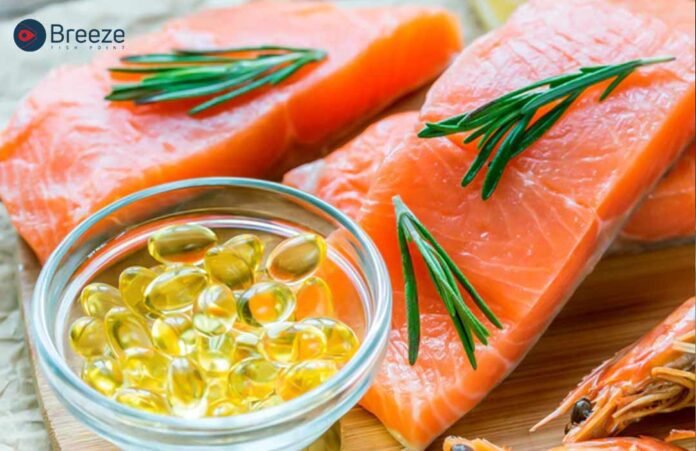Of all the nutrients, probably none attracts as much attention as the Omega-3 fatty acids in the great world of nutrition. Well known for its health benefits, omega-3 unsaturated fats play a pivotal role in the health of the heart, brain, and other organs. But what are the best ways through which these essential fatty acids can be obtained? Ask not further than fat fish with omega-3 and many more benefits it has to offer.
Omega-3 Fatty Acids: What They Are and Why We Need Them
These are polyunsaturated fats more commonly known as the ‘good fats.’ What makes omega-3 special is that they are essential fats and thus cannot be synthesized by the body and must be taken from the diet. The three main types of omega-3s include:
ALA (Alpha-linolenic acid):
The forms are mainly alpha-linolenic acids which are normally found in plant sources such as flaxseeds, chia seeds, and walnuts.
EPA (Eicosapentaenoic acid):
Present mostly in fish with fatty fish such as salmon, mackerel, and sardine being the most common.
DHA (Docosahexaenoic acid)
Docosahexaenoic acid (DHA) is found in cold-water, fatty fish, such as salmon. It is also found in fish oil supplements.
Among all these three, EPA and DHA are very useful for heart and brain health. It assists in the prevention of inflammatory diseases as well as cardiovascular diseases and also plays a critical role in cognitive activities. This makes fish one of the most recommended foods to be taken in our daily diet.
The Omega-3 Benefits: Why You Should Go Fat-Fishing
When people hear the term omega-3, why is it becoming such a big deal? It turns out that this fatty acid offers numerous health benefits, making fat fish an excellent choice for anyone looking to improve their diet:
Heart Health:
Essential fatty acids such as omega-3 have been found to help in the prevention of heart diseases through the reduction of triglycerides, better pattern of cholesterol, and less inflammation in the blood vessels. They also reduce blood things or clotting that reduces chances of experiencing stroke or even heart attack.
Brain Function:
Omega-3s have incredible value in brain growth and development practices. Research indicates that intake of omega-3 fatty acids improves brain functions, decreases chances of developing Alzheimer’s disease, and also enhances mental health.
Inflammation Fighter:
Inflammation is a condition that, if occurs for a long, may lead to diseases such as heart disease, cancer, and arthritis. Fatty acids contain anti-inflammatory compounds that assist in reducing inflammation in different parts of the body.
Eye Health:
The DHA which falls under the omega 3 family is a structural lipid in the retina. Taking enough of omega-3 prevents age-related macular degeneration which is a major cause of vision loss and blindness.
Mental Health:
There is also evidence that links omega-3s to the mental health of a person Some studies have found that omega-3s have a positive impact on mental health. Fish such as Omega-3 is usually prescribed to patients experiencing depression and anxiety since it decreases these signs.
Adding fish with omega-3 foods to your diet is one of the best decisions that you can make as an individual. Of course, salmon and sardines, tuna or even cod, and other white fish which are leaner are all great fish choices for your heart, your brain, and your body. Match it with the right sides, sample the meals, and incorporate Omega 3s into your diet.
FREQUENTLY ASKED QUESTIONS
Whether to Fry the Sardines or Salmon to get Omega-3?
Sardines and salmon are two popular sources of omega-3-rich fish. Sardines are rich in omega-3 fatty acids, protein, and calcium, making them sustainable and eco-friendly. Salmon, on the other hand, is known for its unique taste and versatility in preparing omega-3 fatty acids. It contains approximately 1.8 grams of omega-3s, vitamin D, and protein, making it a healthy choice. However, farmed salmon has lower omega-3 content.
Is Cod Fish Healthy?
Cod is a lean, healthy fish with minimal omega-3 fatty acids, making it suitable for those who prefer fish with a mild taste. It contains 20 grams of protein per serving, making it suitable for those who want to reduce calorie intake while still obtaining essential nutrients.
How Many Ounces in a Portion of Fish?
To ensure adequate omega-3 intake, adult adults should consume 3 or more servings of fish, equivalent to 5 ounces cooked. For salmon, servings should be between 4 to 6 ounces, depending on calorie consumption preferences. For sardines, servings should be around two or three whole fish.
The health benefits of Fat Fish Sushi and Fat Catfish?
Sushi meals often feature fatty fish like tuna and salmon, rich in omega-3 fatty acids. Fat fish sushi is a healthier option with avocado and vegetables. Use low-sodium soy sauce for nutrient-rich options. Catfish, while not as rich in omega-3 as salmon or mackerel, while fat catfish play an important role in healthy lean protein.
Perfect Pairing to eat with fatty fish
What to eat with fish? Simply put, fish should also be partnered with choice sides that complement the target fish’s taste and nutritional value. Some of the best foods to eat with fish include:
Leafy Greens: Spinach, kale, and arugula are all rich in antioxidants and essential vitamins, so they go very well with fat fish. This side dish covered with lemon dressing is best to serve with salmon recipes.
Omega-3 Rich Foods: Increase foods that are high in omega-3 such as walnuts, flaxseed, or chia seed to increase the omega-3 value of your meal. This plant-based source of omega-3 is ALA which can be taken in combination with the EPA and DHA launched in fish.
Roasted Vegetables: Fish and vegetables prepared in the oven such as Brussels sprouts, carrots, or zucchini are a combination that is both tasty and healthy.




